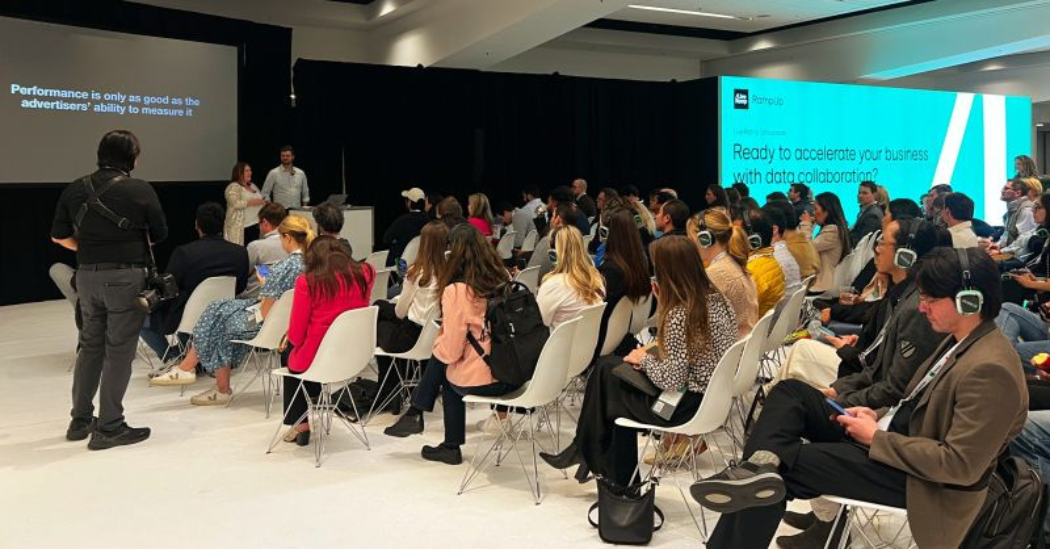LiveRamp’s RampUp Conference—All About Collaboration

Every February, marketing technology platform LiveRamp hosts their RampUp conference in San Francisco, bringing together key players in marketing, data science, and marketing technology. For a company that bills itself as a “data collaboration” platform, it’s not surprising that the theme for this year’s conference was “collaboration.” That theme resurfaced in just about every presentation and product demo across the two-day conference.
Scott Howe, LiveRamp’s CEO, kicked off the event with a keynote address that mined a great analogy between California’s various natural environments and marketing technology. Titled “Nature’s Blueprint: Building the Ultimate Data Collaboration Network,” Howe made the case that the marketing technology ecosystem is interconnected, just like nature. In front of a backdrop of gorgeous California landscapes, he made the case that marketers can learn some valuable lessons from nature:
- Leverage interoperability and win together. We are all dependent on each other. Marketers can achieve greater success by connecting their existing data and tools with others in the marketing ecosystem. Not surprisingly, he offered LiveRamp’s Connect tools as the way to make those connections to “win together.”
- We must evolve. Just as plants and animals evolve to adapt to changing environments and conditions, marketers need to evolve to the changing marketing landscape. In particular, Howe focused on the rapid growth of generative AI as the type of change that marketers need to evolve with, quickly adopting it into their approaches to data organization and analysis.
- Control your destiny. In nature, it is about survival of the fittest. Marketers need to have a similar mindset. When they see an opportunity, they need to take it before one of their competitors beats them to it. The message was to be a leader, not a follower.
Once Howe set the stage with the theme of collaboration, the rest of the conference focused on various LiveRamp partners showcasing how they leverage the platform to collaborate between marketers, publishers, and marketing technology providers. Within those presentations, there were three hot-button areas that resurfaced across the course of the conference:
- Retail media networks (RMNs). RMNs are one of the fastest growing advertising channels, and LiveRamp’s collaborative platform lends itself to many applications in the space. Retailers who are in the process of building out a RMN, such as sports and live entertainment company AEG Worldwide, talked about how they leverage LiveRamp to organize their data, get it to market, and gather customer insights. Another panel featured more established RMNs—Uber, CVS, and Best Buy—sharing their thoughts on coming innovations in the RMN space, from leaning into CTV to leveraging clean rooms to streamline the adtech supply chain.
- Connected TV (CTV). While CTV isn’t exactly a new topic, marketers and publishers alike continued to express optimism about the growth of CTV and how they can collaborate (there’s that theme again!) to leverage each other’s data in ways unavailable in linear TV. A consistent message was the value of CTV to work across the funnel: delivering both brand building and transactions in measurable ways.
- Artificial Intelligence. It wouldn’t be a martech conference if AI wasn’t mentioned at least a hundred times. It was. The innovators panel was asked where they would invest a billion dollars (if they had it) and every one mentioned an AI solution: for adtech, media planning, optimization, and dynamic creative optimization. Many of the product showcases featured real-life AI applications in many of these areas.
A panel dedicated to AI showcased a few of those products. Newton AI leverages a group of dedicated expert agents training in data cleansing and analytics that are overseen by a “controller” agent that acts like a general contractor to dole out assignments, gather results, put them into simple visualizations (including updating presentations), and even acting on them in media platforms. Publicis’ CoreAI tool streamlines agency workflow and is trained with proprietary identity and media information for client security. And Rembrand uses AI to create virtual product integrations into existing TV programs.
The highlight of RampUp was Thursday’s keynote presentation by FUBU founder and Shark Tank “shark” Daymond John. John captivated the packed ballroom telling the story of his rise from handing out flyers for the local mall in Queens to making his own hats and shirts at home and selling them on the street to eventually building a multi-billion dollar hip-hop streetwear brand. John’s origin story was punctuated with personal photos, homespun advice, old school hip hop tracks, and plenty of friendly jabs at his fellow sharks – especially “Mr. Wonderful,” Kevin O’Leary.
Some of John’s notable adages included “Responsibility must be taken, it can’t be given,” “You cannot react, you must respond,” and “thank everyone for your success, blame only yourself for your failures.”
For a closing mantra, he suggested that everyone be a SHARK:
- Set goals —read them every morning when you get up and every night before you go to bed.
- Homework—do your homework before making any decision.
- Amor—love what you do.
- Remember—that you are the brand.
- Keep swimming.
This article is featured in Media Impact Report No. 63. View the full report here.
